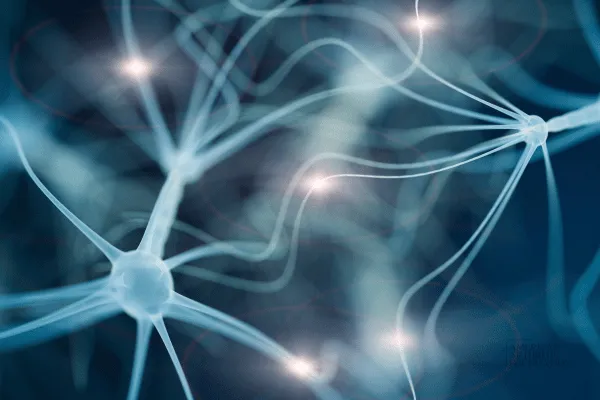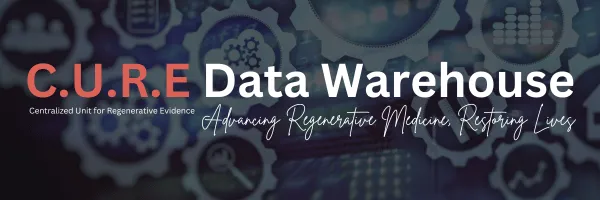Guidance and Tools for Those with Rheumatoid Arthritis
Rheumatoid Arthritis (RA) - a complex autoimmune condition impacting more than just joints. From the eyes to various organs, RA can be widespread, but there's hope. Learn about the powerful treatments available to manage and mitigate its effects.
Living with rheumatoid arthritis (RA) is a unique experience for each individual. Whether you're newly diagnosed or have been managing RA for years, having the right information and support can make a world of difference. Understand the diagnosis process, explore treatment options, and tackle daily obstacles. Here, you'll discover a supportive community of fellow RA warriors, tips to remain active and manage your condition, and avenues to champion not only for yourself but for others too."

The Science Behind Placenta Derived Protein Array (PDPA): Exploring Its Multipotent Cells
In recent years, Placenta Derived Protein Array (PDPA) has garnered significant attention in the scientific and medical communities due to its potential in regenerative medicine. Comprising an array of proteins and bioactive molecules sourced from the placenta, PDPA offers intriguing possibilities for healing and tissue regeneration. By examining current research and studies, we will delve into the mechanisms by which PDPA-derived multipotent cells may contribute to therapeutic applications, highlighting their potential in the field of regenerative medicine without overstating claims or promoting a specific agenda.
Overview of the Proteins and Bioactive Molecules in PDPA
Placenta Derived Protein Array (PDPA) is a collection of proteins, growth factors, and other molecules that come from the placenta—an organ that supports a baby during pregnancy. These molecules play important roles in healing, repairing tissues, and regulating the immune system, which is why PDPA has become a focus for scientists working in regenerative medicine.
Key Components of PDPA:
Growth Factors:
Vascular Endothelial Growth Factor (VEGF): This helps the body grow new blood vessels, which is essential for delivering nutrients and oxygen to heal wounds and repair damaged tissues.
Fibroblast Growth Factor (FGF): Encourages cells to grow and repair tissues like skin, bones, and muscles.
Transforming Growth Factor-Beta (TGF-β): Helps manage inflammation and assists in healing by remodeling tissues.
Cytokines:
Interleukins (ILs): These are signaling molecules that help the immune system reduce inflammation and support the body’s healing processes.
Tumor Necrosis Factor-Alpha (TNF-α): Though it can cause inflammation, it also plays a key role in controlling immune responses and aiding in tissue repair when kept in balance.
Proteins:
Collagen: A vital building block for skin, bones, and connective tissue that helps in repairing and strengthening tissues.
Matrix Metalloproteinases (MMPs): Enzymes that clear out damaged tissue, making room for new, healthy tissue to grow.
Adhesion Molecules: These help cells stick to their surroundings and move to where they’re needed for tissue repair.
Why Scientists Are Interested in Placental Tissue for Regenerative Medicine:
Rich in Healing Molecules:
The placenta is naturally packed with proteins, growth factors, and cytokines that help with healing and tissue repair. Scientists believe these molecules can be used to encourage the body to heal itself, making PDPA valuable for treating injuries and diseases.
Multipotent Cells for Repair:
Placental tissue contains multipotent cells—special cells that can turn into different types of cells, like skin, muscle, or bone cells. This ability to become various cell types makes these cells incredibly useful for healing and regenerating damaged parts of the body.
Less Likely to Be Rejected by the Body:
One of the best features of placental tissue is that it doesn’t usually cause strong immune reactions. This means treatments using PDPA are less likely to be rejected by the body, which is a big advantage when developing therapies, especially for people who have weakened immune systems.
Ethical and Abundant Source:
The placenta is normally discarded after childbirth, so using it for medical research is both ethically acceptable and readily available. Unlike some other sources of stem cells, there are fewer ethical concerns with using the placenta, making it a valuable and sustainable source for regenerative treatments.
Scientists are excited about PDPA because it offers a natural, abundant source of healing proteins and multipotent cells that can help the body repair itself. These properties—combined with its low risk of causing immune rejection—make it a promising option for developing new treatments for a variety of injuries and diseases. From wound healing to potentially treating chronic conditions, PDPA holds significant potential for the future of regenerative medicine.
What Are Multipotent Cells?
Multipotent cells are a type of stem cell with the unique ability to develop into several different types of cells, but only within a specific family of cells. Unlike pluripotent cells, which can become any cell type in the body, or totipotent cells, which can form both the embryo and the placenta, multipotent cells have more limited potential, but they are still incredibly valuable for the body’s healing and repair processes.
Key Characteristics of Multipotent Cells:
Specialized Potential:
Multipotent cells can transform into a variety of cell types, but only within a certain group of tissues. For example, blood stem cells (called hematopoietic stem cells) can become different types of blood cells, but they won’t turn into skin, muscle, or nerve cells.
Found Throughout the Body:
Multipotent cells are found in various tissues and organs in both adults and embryos. Some well-known examples include:
Hematopoietic Stem Cells (HSCs): These cells, found in the bone marrow, can develop into all types of blood cells, like red blood cells, white blood cells, and platelets.
Mesenchymal Stem Cells (MSCs): These cells can become bone, cartilage, muscle, or fat cells and are found in tissues like bone marrow and fat.
Essential for Repair and Regeneration:
Multipotent cells are crucial for the body’s ability to repair itself. When tissues are damaged, these cells are called into action to replace or regenerate the specific types of cells needed for healing. For example, when there’s an injury, multipotent stem cells can produce new skin, blood, or muscle cells to replace those that were damaged.
Why Multipotent Cells Are Important in Medicine:
Because of their ability to transform into different cell types within a particular tissue, multipotent cells play a critical role in regenerative medicine. They can be used to treat conditions where specific tissues are damaged or lost, such as in:
Bone and Joint Repair: MSCs are often studied for their potential in treating bone fractures, joint damage, and cartilage injuries.
Blood Disorders: HSCs are used in therapies to treat diseases like leukemia and other blood-related conditions by replenishing the body’s blood cells.
Wound Healing: Multipotent cells can also be harnessed to accelerate the healing process in wounds by producing new skin cells or promoting tissue regeneration.
How PDPA Leverages Multipotent Cells:
Placenta Derived Protein Array (PDPA) contains multipotent cells, which makes it an exciting candidate for developing new therapies. The multipotent cells in PDPA have the potential to become various types of cells that are crucial for healing damaged tissues, whether in the skin, muscles, or bones. These cells, combined with PDPA's bioactive proteins, create a powerful tool for regenerative treatments, giving scientists and doctors new ways to repair tissue damage, reduce inflammation, and promote healing.
Potential Applications of PDPA in Medicine
Placenta Derived Protein Array (PDPA) holds significant promise in various areas of medicine due to its rich composition of growth factors, bioactive proteins, and multipotent cells. These elements have the potential to aid in healing, regeneration, and immune modulation, making PDPA an exciting focus for research and therapeutic development. Here are some of the key potential applications of PDPA in medicine:
1. Regenerative Medicine
Tissue Regeneration: One of the most promising applications of PDPA is its use in regenerating damaged tissues. The multipotent cells in PDPA can transform into specific types of cells, such as skin, muscle, or bone cells, to replace damaged or dead tissue. This ability could be applied to treat injuries or degenerative diseases that involve tissue loss or damage.
Organ Repair: PDPA could play a role in helping repair damaged organs by stimulating the regeneration of healthy cells. For example, in liver or heart disease, PDPA’s bioactive molecules might encourage the body to generate new, healthy cells to replace damaged tissue, potentially improving organ function.
2. Wound Healing and Scar Reduction
Accelerated Healing: PDPA contains growth factors that promote the rapid formation of new tissue and blood vessels (angiogenesis). This makes it particularly useful for speeding up the wound healing process. Whether from surgeries, burns, or traumatic injuries, PDPA could help close wounds more quickly and reduce recovery time.
Scar Tissue Reduction: The proteins and cytokines in PDPA help regulate the body’s inflammatory response and encourage proper tissue formation. By managing inflammation and guiding tissue regeneration, PDPA may reduce the formation of scar tissue, leading to better aesthetic and functional outcomes.
3. Anti-Inflammatory and Immune Modulation
Inflammatory Disease Management: PDPA’s ability to regulate the immune response could make it valuable for treating inflammatory diseases. The cytokines in PDPA, such as interleukins, can help calm the body’s immune response, reducing inflammation and preventing tissue damage in diseases like rheumatoid arthritis or Crohn’s disease.
Immune Tolerance: PDPA may also help induce immune tolerance in cases of organ transplants or autoimmune diseases, where the body mistakenly attacks its own tissues. The low immunogenicity of PDPA means it is less likely to provoke an immune reaction, making it a good candidate for immune-modulating therapies.
4. Cosmetic and Dermatological Treatments
Skin Rejuvenation: PDPA could be used in cosmetic procedures aimed at rejuvenating the skin. The proteins and growth factors in PDPA promote collagen production, improve skin elasticity, and reduce fine lines and wrinkles. This makes it an attractive option for anti-aging treatments, including skin creams, serums, and injections.
Treating Skin Conditions: Beyond cosmetic use, PDPA might also help treat skin conditions like chronic wounds, ulcers, or even conditions like psoriasis by promoting tissue regeneration and modulating inflammation.
5. Bone and Joint Regeneration
Bone Healing: PDPA’s growth factors and multipotent cells have the potential to aid in bone regeneration. This could be particularly valuable in treating fractures, bone grafts, or even degenerative bone diseases like osteoporosis.
Cartilage Repair: For joint injuries or diseases like osteoarthritis, PDPA could promote the regeneration of cartilage, which often does not heal well on its own. By encouraging the growth of new cartilage cells, PDPA could help restore joint function and reduce pain in affected areas.
6. Neurological Repair and Recovery
Nerve Regeneration: There is growing interest in the ability of placental-derived therapies like PDPA to aid in nerve regeneration. Multipotent cells from PDPA could help repair damaged nerves, potentially offering new treatments for spinal cord injuries, neuropathy, or neurodegenerative conditions like Parkinson’s disease.
Brain Injury and Stroke Recovery: PDPA’s anti-inflammatory properties and ability to promote cell regeneration may also be useful in treating brain injuries or aiding in recovery after a stroke. By reducing inflammation and promoting the growth of healthy brain cells, PDPA could potentially improve outcomes for patients with neurological damage.
7. Cardiovascular Regeneration
Heart Repair: For patients with heart disease, PDPA could be used to help regenerate damaged heart tissue, particularly after heart attacks or in cases of heart failure. The proteins and growth factors in PDPA may help stimulate the growth of new heart muscle cells and blood vessels, improving overall heart function.
Blood Vessel Formation: PDPA’s ability to promote angiogenesis (the growth of new blood vessels) could be beneficial in cardiovascular treatments, where restoring blood flow to damaged tissues is critical.
PDPA’s combination of multipotent cells, growth factors, and anti-inflammatory molecules makes it an incredibly versatile tool for a wide range of medical applications. From regenerating damaged tissues to modulating the immune system, PDPA holds significant promise for the future of medicine. As research continues, PDPA could pave the way for new therapies that improve healing, reduce inflammation, and enhance quality of life for patients suffering from various conditions.
Ethical Considerations and Regulatory Challenges of PDPA
While Placenta Derived Protein Array (PDPA) holds significant potential in regenerative medicine and therapeutic applications, it also raises important ethical and regulatory concerns. These issues must be carefully navigated to ensure responsible use of placental materials in medicine while maintaining transparency, safety, and respect for the rights of donors.
Ethical Considerations
Ethical Sourcing of Placental Tissue:
Informed Consent: One of the primary ethical concerns regarding the use of placental tissue is ensuring that the placenta is sourced ethically. This involves obtaining informed consent from the mothers who donate the tissue after childbirth. Mothers must be fully aware of how the placenta will be used, the potential applications, and any risks involved in the collection and use of the tissue.
Voluntary Donation: Placental tissue donation should always be voluntary, without any form of coercion or financial incentive. The decision to donate should not impact the mother's medical care or her relationship with healthcare providers.
Privacy and Confidentiality: Protecting the personal information and privacy of the donors is critical. Any identifying information related to the donation should be handled confidentially to safeguard the donor's rights.
Non-Exploitation:
Fair Distribution of Benefits: One concern is ensuring that the benefits of PDPA-based therapies are distributed fairly and equitably, avoiding exploitation of vulnerable populations. For instance, placental donations should not disproportionately come from low-income or marginalized groups in exchange for financial compensation or promises of medical care.
Avoiding Commercialization: The commercialization of human tissues, including placental materials, can raise ethical red flags. While medical advancements are valuable, turning human tissues into purely commercial products can raise questions about commodifying body parts.
Use of Human-Derived Products:
Cultural and Religious Sensitivities: Different cultures and religious groups may have specific views on the use of human-derived products, including placental tissue, in medical treatments. These sensitivities must be taken into account when developing and promoting PDPA-based therapies. Ensuring that treatments are used with cultural awareness and respect is key to avoiding ethical conflicts.
Regulatory Challenges
Regulatory Approval for Safety and Efficacy:
Clinical Trials and Testing: Before PDPA-based therapies can be widely used, they must undergo rigorous clinical trials to prove their safety and efficacy. Regulatory bodies like the U.S. Food and Drug Administration (FDA) or the European Medicines Agency (EMA) require a robust set of data from preclinical and clinical studies that demonstrate the treatment's effectiveness and low risk of adverse effects. Ensuring that these treatments meet the high standards for approval is both a time-consuming and costly process.
Long-Term Safety Monitoring: Because PDPA-based therapies involve biological materials, there are potential long-term risks that might not be fully understood during early testing phases. Regulatory agencies will require long-term monitoring of patients who receive these treatments to ensure that there are no delayed or unforeseen side effects, such as immune reactions or tumor formation.
Standardization of PDPA Products:
Consistency in Manufacturing: Producing PDPA in a standardized, safe, and reproducible way is a significant regulatory challenge. Biological materials can vary widely in composition, which can affect the consistency of treatments. Regulatory bodies require strict quality control measures to ensure that each batch of PDPA-based products is consistent in potency, purity, and safety.
Quality Control: Manufacturing processes need to adhere to Good Manufacturing Practice (GMP) standards to ensure that PDPA products are free of contaminants and are produced under controlled conditions. Ensuring the biological material maintains its efficacy and safety during production and storage is critical for regulatory approval.
Ethical Approval for Research:
Ethical Review Boards: All research involving human tissues, including PDPA, must be approved by Institutional Review Boards (IRBs) or ethical review committees. These bodies ensure that the research is conducted in an ethical manner, protecting the rights and well-being of participants and donors. This oversight adds another layer of regulatory compliance that research teams must navigate.
Transparent Reporting: Researchers must transparently report their findings, methodologies, and any conflicts of interest to regulatory agencies and the public. This transparency is vital for building trust in new therapies and for ensuring that ethical standards are upheld.
Market Regulation and Accessibility:
Regulation of Commercial Use: Once PDPA-based therapies receive regulatory approval, governing bodies will need to ensure that these treatments are marketed and distributed ethically. This includes preventing misleading claims about the effectiveness of treatments and ensuring that therapies are not marketed solely to profit off vulnerable patients seeking innovative treatments for incurable conditions.
Accessibility and Affordability: Ensuring that PDPA therapies are accessible to a wide range of patients is a key regulatory concern. If these treatments are prohibitively expensive or available only to a select few, it could lead to disparities in access to care. Regulatory agencies may consider this when approving new therapies, encouraging the development of treatments that are both safe and affordable.
While PDPA shows immense potential in regenerative medicine, it must be developed and used within a framework that respects ethical standards and meets stringent regulatory requirements. Ethical sourcing, protection of donor rights, and ensuring equitable access to treatments are essential. At the same time, regulatory hurdles like clinical trial approval, product standardization, and long-term safety monitoring are necessary to ensure that PDPA-based therapies are both safe and effective for patients. Balancing these considerations will be crucial as PDPA moves from research to real-world applications.
Have a question?
We're Here to Help
By providing my phone number, I agree to receive text messages from the business.


